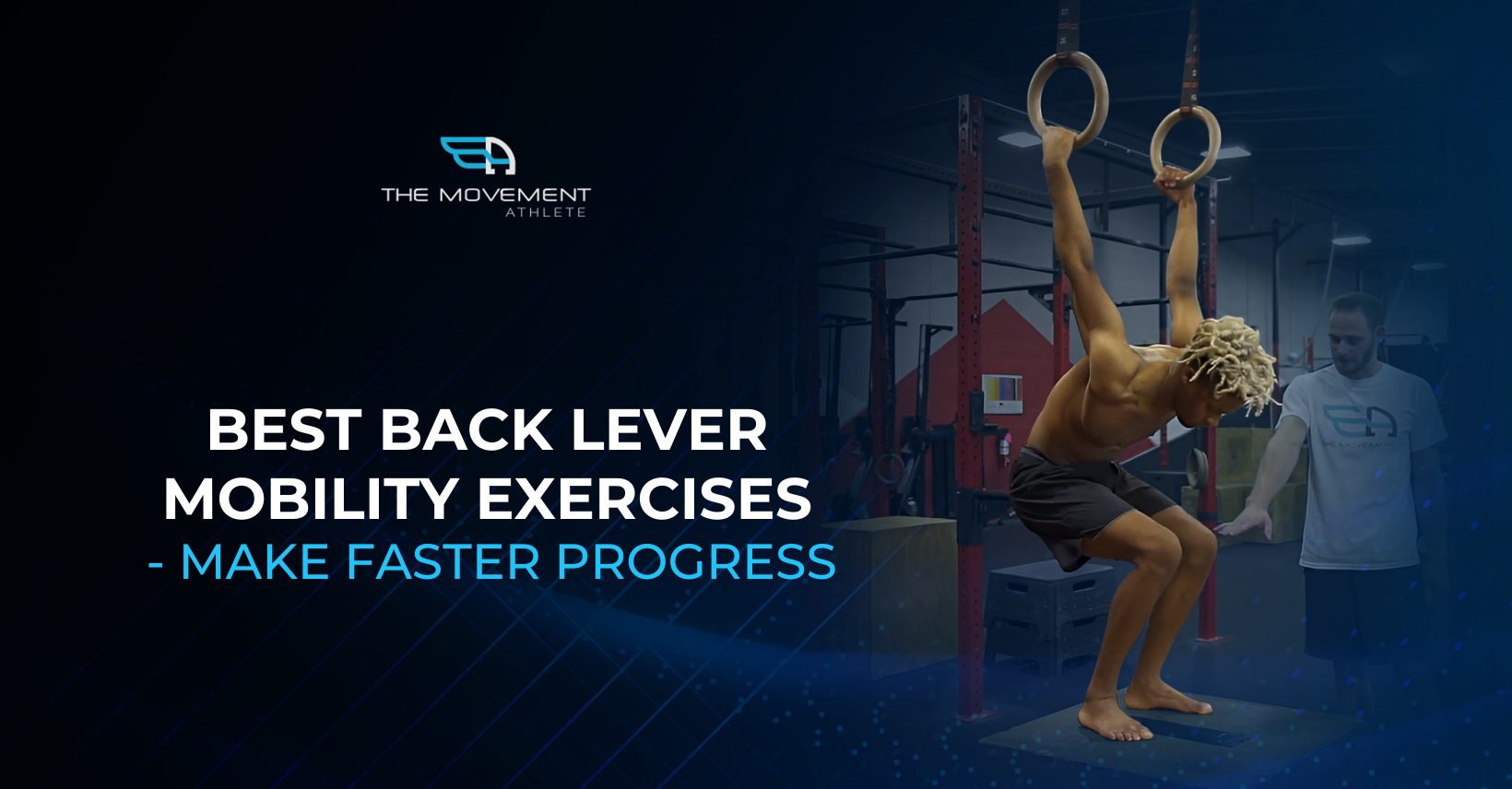
Join the tribe of Movement & Calisthenics Athletes – people just like you that are working with their own body weight to get strength, lose fat build muscle, recover from injuries and live their best lives!
Are you looking to improve your strength and mobility for a back lever?
You’re in luck!
Many people struggle with executing this difficult technique due to limited range of motion. But with the correct exercises and drills, you can break through those barriers faster than ever before.
In this blog post, we’ll discuss the best back lever mobility exercises so that you can achieve optimal performance on your journey toward mastery. You don’t want to miss out on these invaluable tips, so keep reading for great advice from our team of knowledgeable fitness professionals who know just how to make sure you reach top form!
You can also check out this video to see a sample mobility workout for back lever: 📍How to Fix Your Back Lever Mobility in 10 Minutes!
✨Flexibility vs Mobility
Let’s first quickly discuss the difference between these two commonly interchanged terms. While they seem the same, there is not exactly one term.
🤜Flexibility
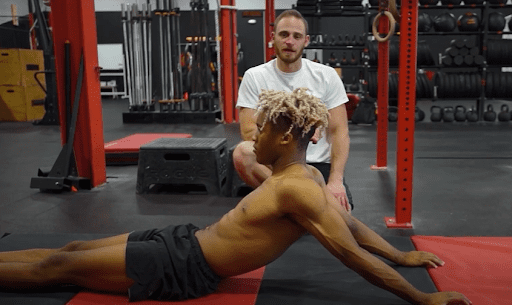
Static hold at end range
Let’s keep it short. Flexibility refers to the passive holds at the end range. Passive meaning that the muscles and joints are assisted in reaching the end range. Assistance can be in the form of pushing your arms using gravity, the floor, another person, or weights to reach the range.
As an example, the shoulder extension stretch in the photo above forces your arms into extension with the help of the floor. The floor resists the movement of your hands so you can move into a deeper stretch. In contrast to moving into shoulder extension without the floor and moving on your own.
Flexibility is trained through passive stretches. While there’s a debate about whether passive stretch is good to include in a warm-up, it’s best to include them in the cooldown section when muscles are warm and joints are already lubricated.
🤜Mobility
Skin the Cat Lifts and Return
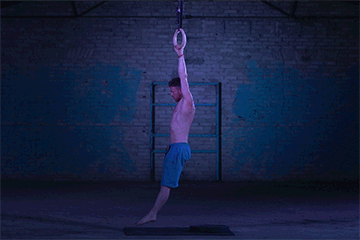
Active movement
In contrast to flexibility, mobility refers to the active hold or movement in a given range of motion. The key point here is the term “active”, so meaning your muscles are moving on its own without the assistance of external force.
An example is the skin the cat lifts and returns, like in the video above. The Movement Athlete coach moves through the shoulder extension without any assistance. Another example is the back lever holding itself.
Mobility is the manifestation of strength in the specific range. You can train this through specific and general exercises. For example, dips can improve shoulder extension if you move deep in the dips.
🤜Combination of both
Both flexibility and mobility are important in back lever and in general fitness. Flexibility assists in imp,roving mobility then mobility is demonstrated in different movements such as the back lever. So in this guide, we’re going to show you exercises for both flexibility and mobility.
😱Why flexibility and mobility crucial for the back lever?🤛
The number one reason is safety. Because the back lever is in very unusual position, jumping into the position without the necessary flexibility and mobility can be dangerous. The hang adds passive tension to the unusual range of motion. Loading the shoulders with a limited range of motion can be too much and cause a tear in the muscles.
Another one is, of course, it’s a requirement for the back lever. If you have limited shoulder extension to flexion mobility, then you will have a hard time entering the back lever position.
🤔What do you need to work on for back lever?
🔥Shoulder Extension and Flexion Mobility
The main and obvious requirement for the back lever is your ability to move your arms behind you, For the arm flexion, we’re going to improve the shoulder movement as well as the other connecting muscle groups such as the chest, and the coracobrachialis which is a connecting muscle to the biceps.
🔥Scapula Mobility
Scapula depression and protraction are crucial for stabilizing the shoulders in position for maximum force output. To address these, you’re lower traps, lats,pec muscles and serratus anterior should be capable of the range of motion to do so.
💥Best Mobility Exercises for Back Lever
The back lever demonstrates the both strength and mobility. You cannot progress in the back lever without the necessary shoulder extension/flexion mobility.
Training the back lever itself can also help train the mobility, but entering the position without directly working on your mobility can be dangerous and slow down progress.
There are actually a ton of exercises you can choose from to improve mobility, but for now, we’re going to focus on the mobility exercises specific to the back lever for faster progress.
SPECIFICITY IS THE KEY.
👊Soft Tissue Work
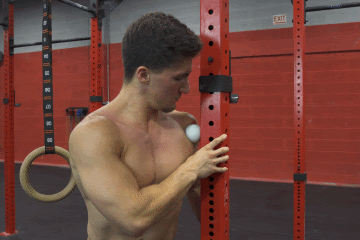
Preparing your chest and anterior deltoids can help facilitate better mobility. The soft tissue work exercise improves pain tolerance so the joint and muscle groups can move through a wider range of motion in the training session. This exercise desensitizes your muscles which opens up the opportunity for a better range of motion.
A tennis ball, lacrosse ball, or anything round and relatively hard that can push within against the muscles can be used for this exercise. It’s basically the concept of foam rolling or myofascial release. Current research shows mixed results regarding the method’s effectiveness, but you can definitely include them in your warm-up if it works for you.
☝️How to Perform
- Position close to a wall or post.
- Pin the ball in between your anterior shoulders and wall.
- Press your body into the ball and wall.
- Inhale for 4 seconds.
- Contract your muscles for 4 seconds.
- Relax your muscles and exhale for 8 seconds.
- Repeat the process.
🎯Coaching Pointers
- Engaged core
- Focus on sensitive points
- Aim for mild discomfort and not painful
- Deep breathes
🌟Variations
You can play around with pressure and trigger points. You can move around your arms or hold the position isometrically. You can also move your body to roll the ball. Duration can vary, but the maximum should be 10 minutes per side.
👊Active Shoulder Extension Range
The next step is to develop the mobility for shoulder extension. This exercise focuses on an active range of motion, so there will be no assistance from gravity or a wall, and your muscles will be facilitating the movement.
In this exercise, you will need either a band or a stick to hold your arms equally into position. The wall acts as a screening tool so you don’t break your bodyline and maintain a straight and good posture.
☝️How to Perform
- Stand in front of a wall while holding a stick.
- Hold the stick behind you.
- Extend your arms straight.
- Push the stick back as far as you can go.
- Lift your arms upward as far as you can go.
- Hold the top position.
- Lower down with control.
- Repeat for reps.
🎯Coaching Pointers
- Aim to place your hands close to shoulder-width apart.
- Lockout straight arms
- Depressed and retracted shoulders
- Straight bodyline
- Face close to the wall to avoid leaning forward
🌟Variations
You can hold the top position for the additional challenge instead of performing the exercise with reps.
👊90-90 Stretch
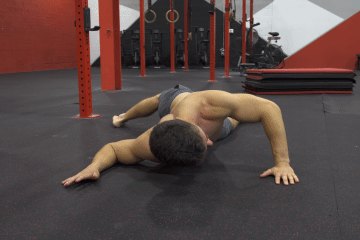
As the name suggests, this stretch is performed with a 90-degree angle with your shoulders and your elbows that’s forming a square.
In this exercise, we get to stretch out pec muscles and the shoulder, which translates well into the back lever. In addition, there’s also a spine rotation component that can improve for your spine mobility for general spin health.
☝️How to Perform
- Begin by lying on the floor in a pronated position.
- Align one arm by your side and point your forearm forward so that your elbows form a 90-degree angle.
- Plant the other hand by your side aligned with your shoulder so that you also form a form0-degree angle with your elbows.
- Push down with the raised arm against the ground.
- Roll the side of your body with the raised arm away from the floor.
- Pull the leg of the same side to the other side to roll also the hips away from the floor.
- Hold the position for a time.
- Switch sides and repeat.
🎯Coaching Pointers
- Take deep breaths
- Move through the range of motion to a slight discomfort
- The exercise should not be painful
🌟Variations
You can flip the arm lying on the floor, so instead of it pointing forward, you point it downward.
👊Shoulder Extension on Floor
For this exercise, we’re going to focus on the passive flexibility of your shoulders.
☝️How to Perform
- Start by sitting down on the floor.
- Place your hands behind you.
- Extend your arms backward to lock out straight..
- Extend your legs forward.
- Move the rest of your body forward to stretch the shoulders into extension.
- Hold the maximum range for time.
🎯Coaching Pointers
- Hands placed shoulder-width apart as much as possible
- Move through your capable flexibility
- Don’t go too deep, causing pain
- Take deep breaths
🌟Variation
You can also perform this exercise on rings to better simulate the back lever position. Performing it on rings also allows you to move more freely along the range of motion comfortable for your shoulder extension range. This exercise is basically the skin the cat or the German hang.
👊Crab Sliders
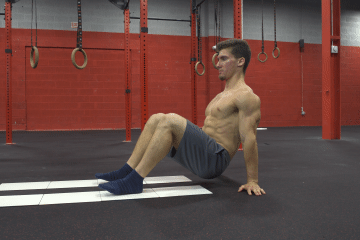
In this exercise, we’re working again on the shoulder extension in an active state. The crab slider is a fun way to build up shoulder mobility without extended hold times, so you won’t get easily bored with the move. It’s actually just like playing around while getting to improve your shoulder mobility.
It’s ideal for placing sliders or at least wearing socks to facilitate a smoother slide for the movement. It’s also best to work with a smooth surface to reduce friction. Doing this exercise on a carpet could be more tiring because of the resistance on your feet.
☝️How to Perform
- Begin sitting on the floor.
- Plant your feet in front of you with bent legs.
- Place your hands behind you.
- Push down your shoulders and straighten your arm.
- Lift your bum off the floor.
- Push off your hands into shoulder extension and let your feet slide off the floor for 5 seconds.
- Hold the maximum range for 5 seconds.
- Put your bum down on the floor and reset your hands to the starting position.
- Repeat for reps.
🎯Coaching Pointers
- Core engaged
- Straight arms
- Full body tension
- Focus on shoulder stretch during the last extension
- Breath
👊Fire Hydrant / Hip Openers
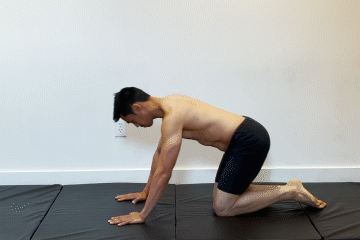
You might be confused why we have a lower body mobility work for the back lever. Don’t worry. The back lever itself doesn’t require a high level of hip and lower body mobility. However, it does require mobility when entering the straddle back lever hold.
The straddle position opens up the hips and legs. This shortens the lever compared to a full back lever, making the exercise significantly easier. In the context of the straddle back lever, the hip openers will help you improve your lower body mobility for this specific progression. In addition, it’s great to add additional lower body mobility training for general health.
☝️How to Perform
- Begin in a quadruped position on the floor.
- Lift one leg backward until your hamstrings are leveled to your shoulders.
- While at the same height, move it outwards to the side.
- Slowly lower down to starting position.
- Reverse the motion
- Repeat for reps.
- Do the same for the other leg.
🎯Coaching Pointers
- Full body tension
- Engage your core
- Keep your hips squared
- Straight upper torso
- Avoid arching the lower back
- Shoulders depressed and scapula protracted
- Lockout arms
🌟Variation
You can perform this exercise with straight legs to increase the intensity of the exercise. You can also add holds at the side or back end range for an additional challenge.
📌Takeaway
The back lever is not only a strength skill but also requires a high degree of shoulder mobility. You cannot skip this element of the skill. Do the mobility work diligently, and you will surely make fast progress toward the back lever.
Check out the workout section to learn how to incorporate these movements into your training:
Back Lever Workout Guide